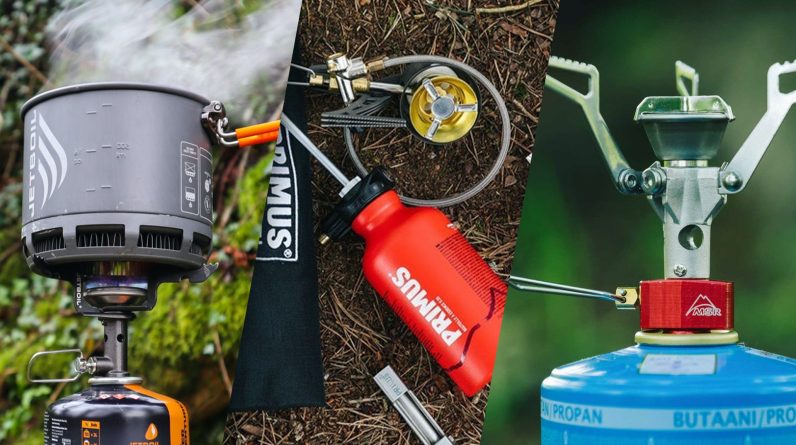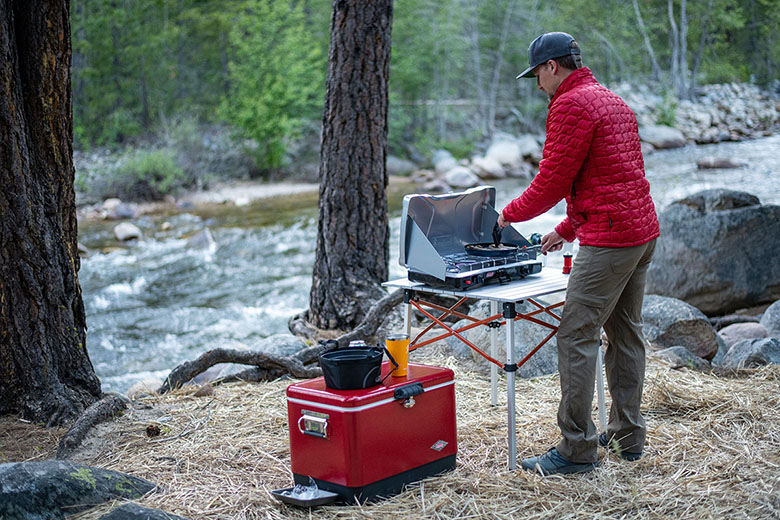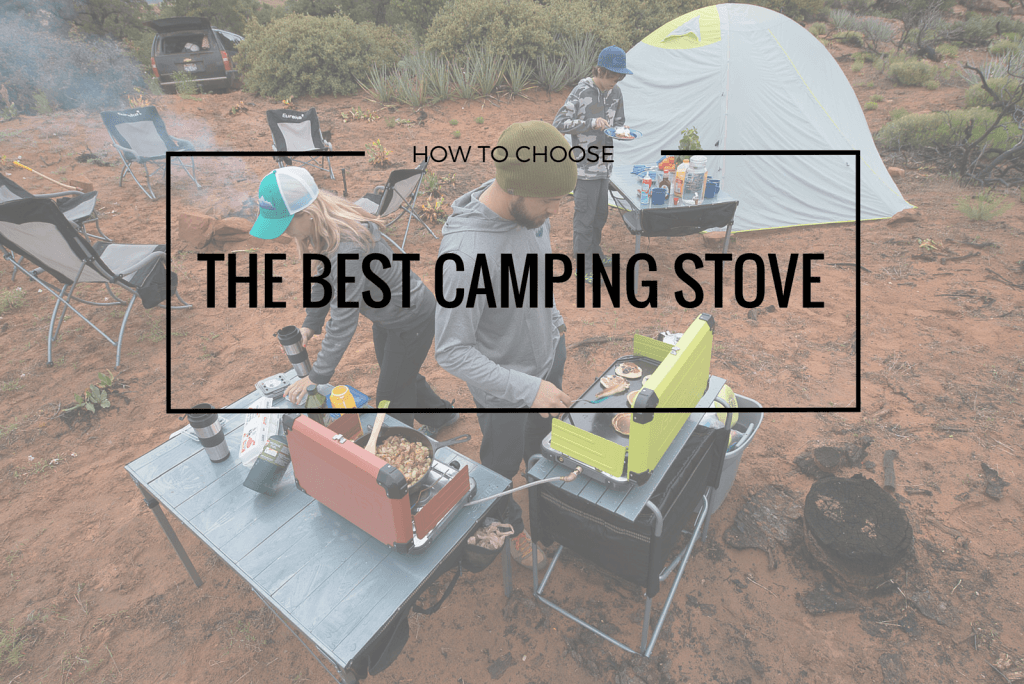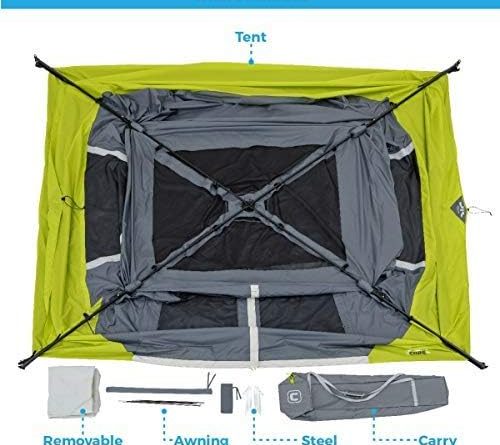
So you’re planning a camping trip and you’re in need of a camping stove that will meet all your cooking needs? Choosing the perfect camping stove can be a bit overwhelming with all the options available in the market. But don’t worry, in this article, we’ll provide you with some useful tips and considerations to help you make the right choice.
In our article on “Tips for Choosing the Perfect Camping Stove,” you’ll discover the key factors to consider when selecting a camping stove that suits your needs. We’ll guide you through the different types of camping stoves available, such as propane, liquid fuel, and wood-burning stoves, and help you understand their pros and cons. Additionally, we’ll delve into the importance of considering factors like portability, cooking capacity, fuel efficiency, and ease of use when making your decision. By the end of the article, you’ll have all the knowledge and tools necessary to choose the perfect camping stove for your next outdoor adventure. So read on and get ready to cook up some amazing meals on your camping trips! Choosing the perfect camping stove is essential for a successful outdoor adventure. With so many options available in the market, it can be overwhelming to make the right choice. Factors such as fuel type, cooking capacity, portability, ignition method, and burner design should all be considered when selecting a camping stove. In this article, we will discuss these factors in detail to help you make an informed decision.

This image is property of www.switchbacktravel.com.
Fuel Type
The first factor to consider when choosing a camping stove is the fuel type. There are various options available, each with its own advantages and disadvantages. Here are some common fuel types for camping stoves:
Propane
Propane is a popular choice due to its efficiency and availability. It comes in easily refillable canisters, making it convenient for camping trips. Propane stoves are known for their consistent heat output and ease of use.
Butane
Butane canisters are lightweight and compact, making them ideal for backpacking trips. However, they are not as efficient in cold temperatures, so it is important to choose a stove that accommodates cold weather use if you plan on camping in colder climates.
White Gas
White gas stoves are versatile and provide a high heat output, making them suitable for cooking in extreme weather conditions. They are also known for their reliability and ability to burn cleanly.
Liquid Fuel
Liquid fuel stoves, such as those that use gasoline or kerosene, are efficient and can be used in a wide range of temperatures. They require regular maintenance and may have a longer setup time, but they offer excellent performance and fuel efficiency.
Wood
Wood-burning stoves are environmentally friendly since they use natural resources. They are lightweight and do not require carrying fuel canisters. However, they are not suitable for all camping situations, especially in areas where collecting firewood is prohibited.
Multi-Fuel
Multi-fuel stoves are versatile and can be used with various types of fuel, offering flexibility in different camping scenarios. They are ideal for those who frequently go on camping trips in different environments.
When choosing a fuel type, consider the availability and cost of the fuel, as well as the specific needs of your camping trips.
Determining Cooking Capacity
The cooking capacity of a camping stove is an important factor to consider, as it determines how many people you can cook for and the types of meals you can prepare. Consider the following when determining the cooking capacity:
Group Size
If you typically camp alone or with a small group, a stove with a single burner may be sufficient. However, larger groups will require stoves with multiple burners to accommodate simultaneous cooking.
Cooking Style
Consider your cooking style and the types of meals you plan on preparing. If you primarily cook simple meals that require boiling water, a stove with a high BTU output and fast boiling time would be suitable. On the other hand, if you enjoy cooking gourmet meals with multiple pans and heat levels, a stove with precise temperature control and multiple burners would be more appropriate.
Meal Variety
Think about the variety of meals you plan on cooking. If you only need to boil water for freeze-dried meals, a basic stove may be sufficient. However, if you plan on preparing meals that require simmering and frying, a stove with adjustable heat levels would be necessary.
Boiling Time
Consider the time it takes for the stove to boil water. If you value fast cooking times, choose a stove with a high BTU output and efficient heat transfer.
By considering these factors, you can determine the cooking capacity that best suits your needs.

This image is property of www.switchbacktravel.com.
Evaluating Portability
Portability is crucial when choosing a camping stove, especially for backpackers and those who prefer to travel light. Consider the following aspects of portability:
Weight
The weight of the stove is an important consideration, especially if you plan on carrying it for long distances. Lightweight stoves are ideal for backpacking, while car campers may prioritize other features over weight.
Size
The size of the stove will determine how much space it occupies in your camping gear. Compact stoves are easier to pack and transport, while larger stoves may offer more cooking space and stability.
Packability
Consider how easily the stove can be packed and stored. Some stoves are designed to fold into a compact size, while others come with a carrying case for convenient storage.
Stability
A stable stove is essential to prevent accidents while cooking. Look for stoves with sturdy legs or a wide base to ensure stability, especially when using larger pots and pans.
By evaluating the portability features of a camping stove, you can choose a stove that fits your specific needs and preferences.
Considering Ignition Methods
The ignition method of a camping stove determines how easy it is to start the stove. Consider the following ignition methods when choosing a stove:
Manual Ignition
Manual ignition stoves require a separate ignition source, such as a match or a lighter, to start the flame. While they may require an extra step to start, they are generally reliable and can be a more cost-effective option.
Piezo Ignition
Piezo ignition stoves have a built-in igniter that creates a spark to ignite the flame. This eliminates the need for a separate ignition source and offers convenience.
Both manual ignition and piezo ignition stoves have their pros and cons, so choose the ignition method that best aligns with your preferences and requirements.

This image is property of eurekacamping.johnsonoutdoors.com.
Comparing Burner Designs
The burner design of a camping stove determines its overall performance and functionality. Consider the following burner designs:
Traditional Burners
Traditional burners consist of a single flame source, which may be ideal for basic cooking needs. They are generally affordable and easy to use, but they may lack advanced features.
Integrated Canister Systems
Integrated canister systems feature a burner and fuel canister that are combined into one unit, offering a compact and efficient design. They are easy to set up and offer good heat output.
Liquid Fuel Stoves
Liquid fuel stoves use a separate fuel bottle and feature a flexible fuel line that connects to the burner. They offer excellent heat output and versatility for different camping scenarios.
Wood-Burning Stoves
Wood-burning stoves utilize natural fuel sources, eliminating the need to carry additional fuel. They are eco-friendly and can provide a unique cooking experience. However, they require a constant supply of firewood and may not be suitable for all camping situations.
Consider your cooking needs, preferences, and the specific features offered by different burner designs to choose the one that best suits your requirements.
Cost Considerations
When choosing a camping stove, it is important to consider the cost not only of the stove itself but also the ongoing fuel costs and maintenance. Here are some cost considerations:
Initial Cost
The initial cost of a camping stove can vary depending on the fuel type, cooking capacity, and additional features. Set a budget and compare the options within your price range to find the best value for your money.
Fuel Cost
Different fuel types have varying costs. Consider the availability and cost of the fuel in the locations where you plan on camping. Some fuel types may require frequent refills or carry additional costs, so factor this into your decision-making process.
Maintenance Cost
Certain stoves may require regular maintenance and replacement parts, which can add to the overall cost over time. Consider the maintenance requirements of the stove and any additional costs associated with upkeep.
By considering the cost factors of a camping stove, you can choose a stove that fits your budget and offers long-term value.

This image is property of carsguide-res.cloudinary.com.
Safety Features to Look for
Safety should be a top priority when selecting a camping stove. Look for the following safety features:
Flame Control
A camping stove with a flame control feature allows you to adjust the heat output as needed. This helps prevent accidental burns and ensures safe cooking.
Stability
Choose a stove with a stable base or sturdy legs to prevent tipping over while in use. This is particularly important when using larger pots and pans.
Heat Resistant Handles
Stoves with heat-resistant handles provide added safety when handling hot pots and pans. Look for stoves with handles that stay cool to the touch.
Pressure Regulator
Select stoves with built-in pressure regulators to ensure a steady and controlled flame. This helps prevent flame flare-ups and promotes safer cooking.
Auto-Shutoff
Some stoves come with an auto-shutoff feature that cuts off the fuel supply if the flame goes out. This feature prevents the risk of gas leaks and potential accidents.
By choosing a stove with these safety features, you can ensure a safe and enjoyable camping experience.
Additional Features and Accessories
In addition to the factors mentioned above, consider the following additional features and accessories that can enhance your camping stove experience:
Wind Shields
Wind shields help protect the flame from wind, ensuring efficient cooking even in breezy conditions. Look for stoves that come with built-in or detachable wind shields.
Carrying Case
A carrying case provides convenience and protection when transporting and storing the stove. Some stoves come with a carrying case included, while others may have it as an optional accessory.
Multiple Burners
If you frequently cook for larger groups or enjoy preparing multiple dishes simultaneously, consider a stove with multiple burners. This allows for more efficient cooking and greater versatility.
Grill Attachment
Some stoves come with a grill attachment, which is ideal for grilling meat, vegetables, and other food items. This provides added cooking options and versatility.
Simmer Control
Stoves with simmer control allow for precise heat adjustments, making it easier to cook delicate foods or simmer sauces. This feature is especially useful for those who enjoy gourmet cooking.
By considering these additional features and accessories, you can choose a camping stove that meets your specific needs and preferences.

This image is property of coresites-cdn-adm.imgix.net.
Conclusion
When it comes to choosing the perfect camping stove, there are several factors to consider. By evaluating the fuel type, cooking capacity, portability, ignition method, burner design, cost considerations, safety features, and additional features and accessories, you can make an informed decision. Remember to prioritize your specific needs and preferences while keeping in mind the different camping scenarios you may encounter. By selecting the right camping stove, you can enjoy delicious meals and a memorable camping experience. So, go ahead and start planning your next outdoor adventure with confidence in your choice of camping stove!




